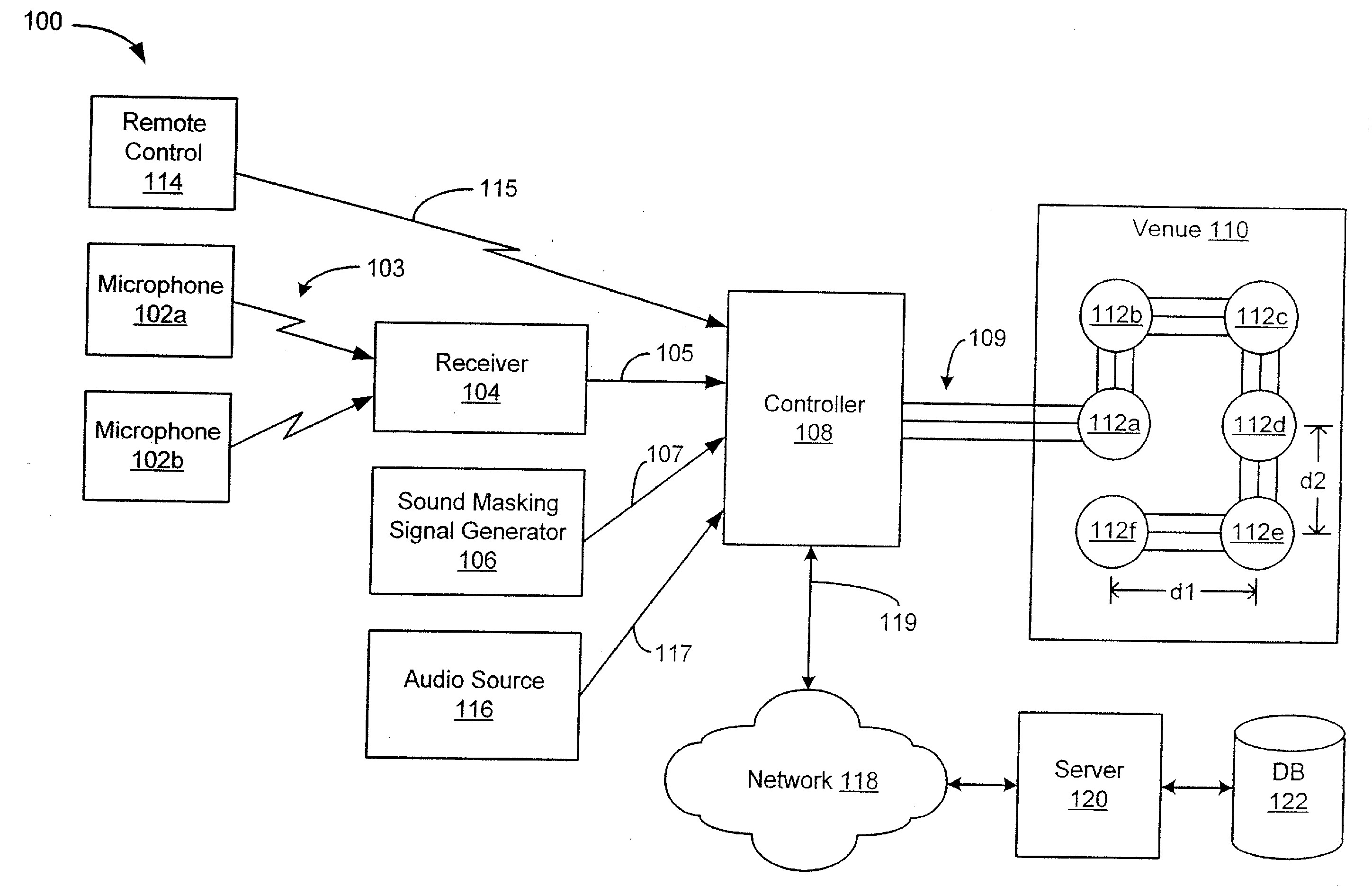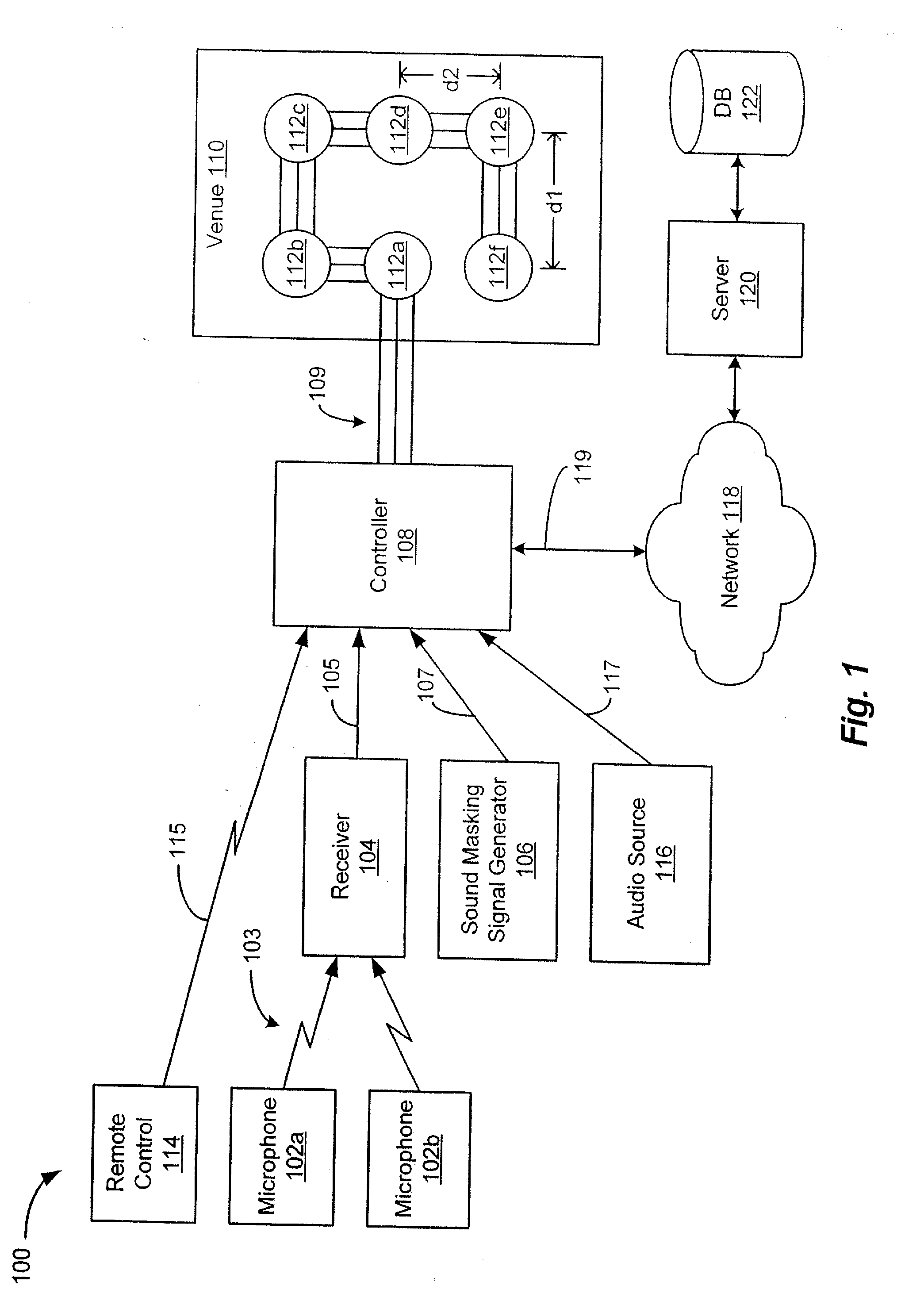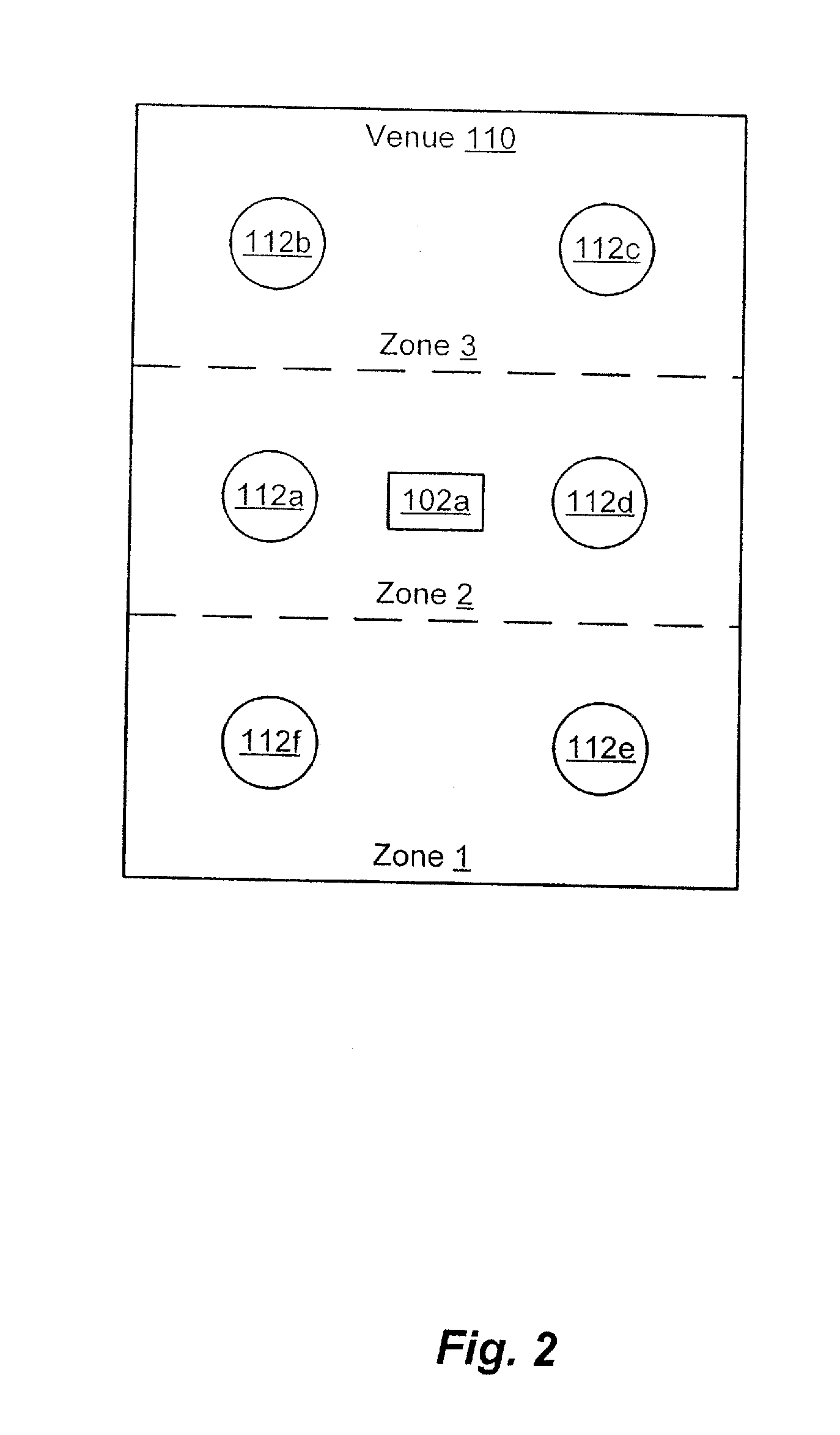Distributed emitter voice lift system
a technology of emitter and voice, which is applied in the direction of transducer acoustic reaction prevention, transducer details, electrical transducers, etc., can solve the problems of unwanted sound generated by student activity inside or outside the classroom, and the simple voice lift system described above has drawbacks, etc., to achieve uniform sound field coverage
- Summary
- Abstract
- Description
- Claims
- Application Information
AI Technical Summary
Benefits of technology
Problems solved by technology
Method used
Image
Examples
Embodiment Construction
[0020]The entire disclosures of U.S. application Ser. No. 12 / 518,460 filed Jun. 10, 2009, entitled DISTRIBUTED EMITTER VOICE LIFT SYSTEM, and U.S. Provisional Patent Application No. 60 / 874,818 filed Dec. 14, 2006, entitled DISTRIBUTED EMITTER VOICE LIFT SYSTEM WITH OPTIONAL SOUND MASKING, are incorporated herein by reference.
[0021]An improved system and method is disclosed for providing sound reinforcement in a classroom, an office, a conference room, an auditorium, or any other suitable venue. The presently disclosed system and method can provide voice reinforcement (“voice lift”) functionality via a plurality of spatially distributed emitters (“loudspeakers”), providing a more uniform sound field coverage and allowing a talker's voice to sound equally natural and equally intelligible at all listener locations. The disclosed system and method can also provide sound masking functionality via the same plurality of spatially distributed loudspeakers used for the voice lift function, g...
PUM
 Login to View More
Login to View More Abstract
Description
Claims
Application Information
 Login to View More
Login to View More - R&D
- Intellectual Property
- Life Sciences
- Materials
- Tech Scout
- Unparalleled Data Quality
- Higher Quality Content
- 60% Fewer Hallucinations
Browse by: Latest US Patents, China's latest patents, Technical Efficacy Thesaurus, Application Domain, Technology Topic, Popular Technical Reports.
© 2025 PatSnap. All rights reserved.Legal|Privacy policy|Modern Slavery Act Transparency Statement|Sitemap|About US| Contact US: help@patsnap.com



